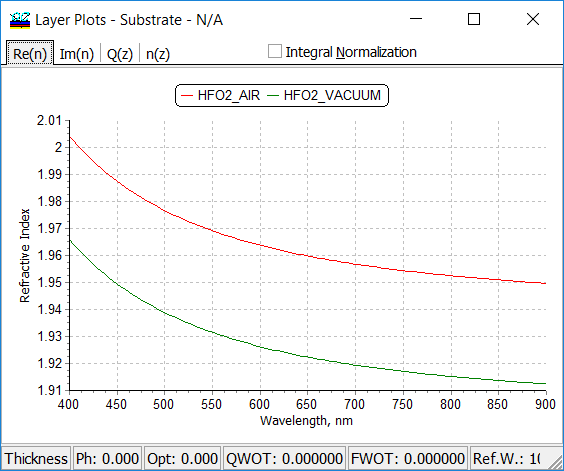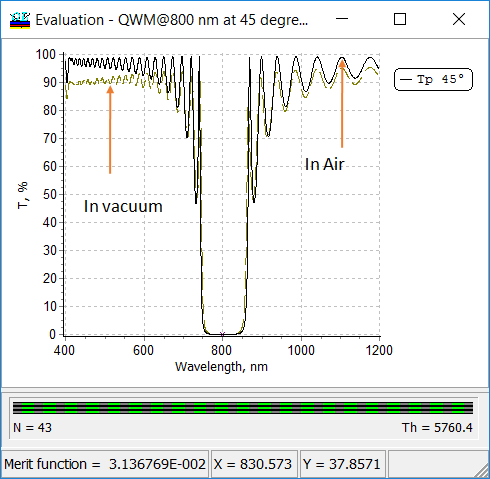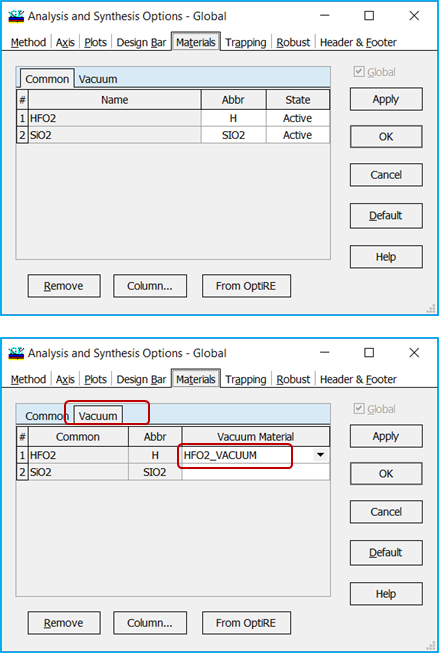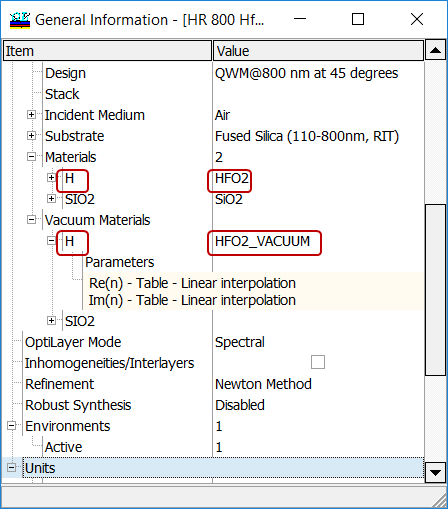|
Vacuum Materials can be loaded additionally to common materials and will share the same abbreviations. If a Vacuum material is available for the same abbreviation, it will be used instead of a common material in all calculations that are related to vacuum environment:
|
Spectral characteristics of the design with normal and vacuum materials are different. Calculation of expected transmittance in vacuum can be important, for example, in the case of monochromatic or BBM control. Example: transmittance of 43-layer quarter wave stack in vacuum is shifted to the shorter wavelengths.
|
| Vacuum materials can be controlled in the Arrange materials dialog, using General Information window, or additional load options of the Layer Materials database. | |
|
|
|
OptiLayer provides user-friendly interface and a variety of examples allowing even a beginner to effectively start to design and characterize optical coatings. Read more…
Comprehensive manual in PDF format and e-mail support help you at each step of your work with OptiLayer.
If you are already an experienced user, OptiLayer gives your almost unlimited opportunities in solving all problems arising in design-production chain. Visit our publications page.
Look our video examples at YouTube
OptiLayer videos are available here:
Overview of Design/Analysis options of OptiLayer and overview of Characterization/Reverse Engineering options.
The videos were presented at the joint Agilent/OptiLayer webinar.




